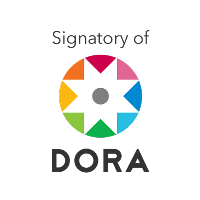Envíos
Lista de comprobación para la preparación de envíos
Como parte del proceso de envío, los autores/as están obligados a comprobar que su envío cumpla todos los elementos que se muestran a continuación. Se devolverán a los autores/as aquellos envíos que no cumplan estas directrices.- La petición no ha sido publicada previamente, ni se ha presentado a otra revista (o se ha proporcionado una explicación en Comentarios al editor).
- El fichero enviado está en formato OpenOffice, Microsoft Word, RTF, o WordPerfect.
- Se han añadido direcciones web para las referencias donde ha sido posible.
- El texto tiene interlineado simple; el tamaño de fuente es 12 puntos; se usa cursiva en vez de subrayado (exceptuando las direcciones URL); y todas las ilustraciones, figuras y tablas están dentro del texto en el sitio que les corresponde y no al final del todo.
- El texto cumple con los requisitos bibliográficos y de estilo indicados en las Normas para autoras/es, que se pueden encontrar en Acerca de la revista.
Artigos
Seção para receber artigos inéditos, com temática livre ou com temática do dossiê referente ao número a ser publicado.Dossiê
Publicação de série de artigos, resenhas, produção artística, entrevista, colaboração especial relevantes que tratam sobre determinado tema específico.Resenhas
Publica resenhas críticas de livros nacionais e internaiconais que aportem novos conhecimentos além do simples resumo da obra.
Tradução
Traduções inéditas de textos relevantes para a área.Imaginação e Ciências Sociais
Seção aberta para receber ensaios fotográficos, ilustrações, gravuras, poesias ou outras manifestações artísticas relacionadas com número temático.Aviso de derechos de autor/a
Los autores que publican en esta revista aceptan los siguientes términos:
Los artículos tienen licencia de Creative Commons Attribution License (CC-BY).
Esta licencia permite que otros distribuyan, mezclen, adapten y creen a partir de su trabajo, incluso con fines comerciales, siempre que le den el debido crédito por la creación original. Es la licencia más flexible de todas las licencias disponibles. Se recomienda maximizar la difusión y el uso de materiales con licencia.
Los autores conservan los derechos de autor y otorgan a la revista el derecho a publicar por primera vez. Se prohíbe el envío total o parcial del manuscrito a cualquier otra publicación periódica. La responsabilidad del contenido de los artículos recae únicamente en los autores. Está prohibida la traducción a otro idioma sin la autorización escrita del Editor previa consulta al Comité Editorial.
La contribución presentada es original e inédita, no está siendo evaluada para su publicación por otra revista y los autores declaran que no existe conflicto de intereses que pueda interferir con la imparcialidad de los trabajos científicos presentados.
Los autores están autorizados a asumir contratos adicionales por separado, para la distribución no exclusiva de la versión del trabajo publicado en esta revista (por ejemplo, publicación en repositorio institucional o como capítulo de libro), con reconocimiento de autoría y publicación inicial en esta revista.








